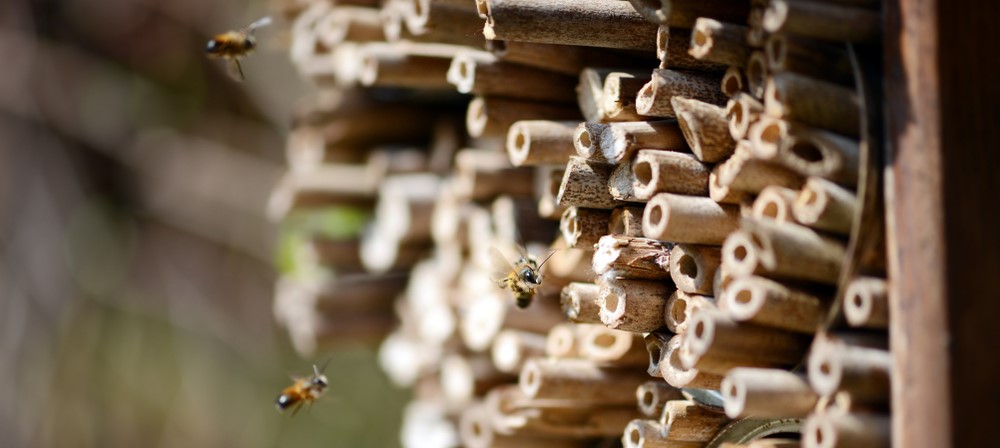Create a Buzz: How to Make Your Garden Pollinator-Friendly This Summer
When was the last time you paused to watch a bee work its way through a flower? That tiny creature plays a mighty role in our ecosystems — and it needs our help. As Pollinator Awareness Week approaches in the UK, there’s no better time to turn your outdoor space, no matter how big or small, into a haven for bees, butterflies and other vital pollinators.
Whether you have a city balcony, a small suburban garden or a sprawling lawn, pollinator-friendly gardening is something everyone can do. Here's how you can support biodiversity and enjoy a vibrant, buzzing garden this summer.
Why Pollinators Matter (And Why June is the Time to Act)
Pollinators like bees, hoverflies, butterflies and moths are crucial to the health of our gardens and food systems. They pollinate about 75% of our favourite crops, from apples to courgettes. But habitat loss, pesticides and climate change are causing UK pollinator populations to decline.
June marks the height of pollinator activity, making it a brilliant moment to give them a helping hand. With Pollinator Awareness Week just around the corner, let’s dig in.
1. Plant for Pollinators – Go Wild and Varied
Forget manicured flowerbeds with double-blooms and pristine symmetry. Pollinators love diversity, especially native and open-faced flowers that make nectar and pollen easily accessible.
Top pollinator-friendly plants for UK gardens:
- Lavender – beloved by bees and humans alike.
- Foxgloves – a wild classic; bumblebees adore their tubular blooms.
- Echinacea (coneflower) – attracts butterflies and looks stunning.
- Thyme, mint & chives – herbs that do double duty.
- Wild marjoram and field scabious – ideal for a naturalised look.
Pro tip: Try planting in clumps — pollinators prefer to forage efficiently.
For year-round support, aim for succession planting: snowdrops and crocuses for early spring, alliums and poppies in summer, and sedums into autumn. This ensures a continuous buffet.
2. Build a Bee Hotel (And a Wild Corner)
A bee hotel is one of the easiest and most educational features you can add to your garden — especially great for kids to get involved. Solitary bees, like the red mason bee, love small tubes or drilled holes in untreated wood.
You can buy bee hotels or craft one from scrap materials. Hang it on a sunny, south-facing wall, sheltered from rain and 1 metre off the ground. Fill it with bamboo canes or hollow plant stems, and you’ll soon notice new residents.
Even better? Leave a patch of your garden wild. That pile of logs, patch of nettles or strip of unmown grass can become an essential nesting or foraging site. Nature doesn’t like perfection — embrace a bit of mess!

3. Say No to Pesticides – Choose Natural Alternatives
It might seem obvious, but this is one of the biggest shifts we need in modern gardening. Chemical pesticides and weedkillers can be lethal to pollinators, even when used "responsibly".
Opt for natural pest control:
- Introduce beneficial insects like ladybirds and lacewings.
- Use companion planting (e.g. marigolds to deter aphids).
- Spray pests off with water rather than chemicals.
- Accept a little imperfection – a few chewed leaves is part of the balance.
You’ll find that with time, your garden becomes a self-regulating ecosystem.
4. Provide Water – Not Just Nectar
Pollinators get thirsty too. A shallow dish of water with pebbles or corks for landing can be a lifesaver during hot summer days.
Keep it clean, place it in partial shade, and refresh regularly. This small detail is often overlooked but makes a big impact, especially for urban bees.
5. Go Peat-Free and Soil-Smart
The way you garden beneath the surface also affects the pollinators above. Choose peat-free compost to protect peatland habitats (which are crucial carbon stores and home to many rare species).
Healthy soil equals healthy plants — and in turn, a better buffet for pollinators. Add organic matter like compost or leaf mulch to boost soil life and structure naturally.
6. Get the Community Involved
One pollinator-friendly garden is great. A whole street of them? That’s powerful. Encourage neighbours to plant bee-friendly flowers or join in with a community garden pollinator project.
You can even register your garden on the B-Lines map, a national initiative to create insect superhighways across the UK.
Every Garden Can Make a Difference
Pollinator-friendly gardening isn't just for experts or countryside dwellers. It's for flat balconies, front gardens, even window boxes. By choosing the right plants, ditching chemicals, and letting nature reclaim a little space, you're helping reverse pollinator decline — one bloom at a time.
So this summer, let your garden buzz. The bees will thank you — and your tomatoes might, too.
